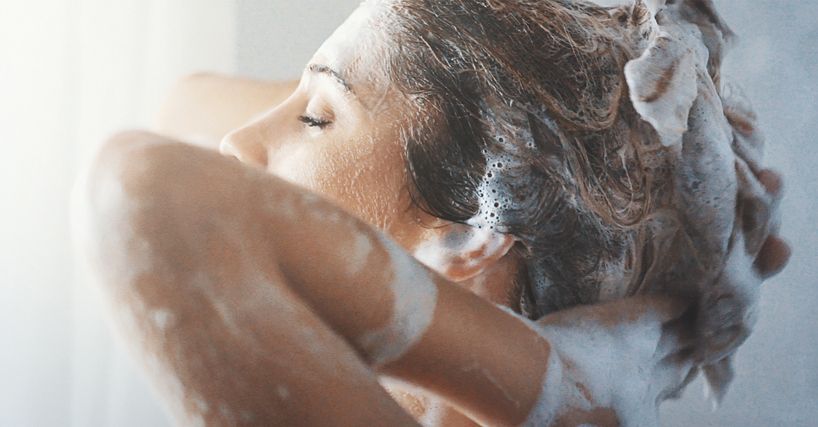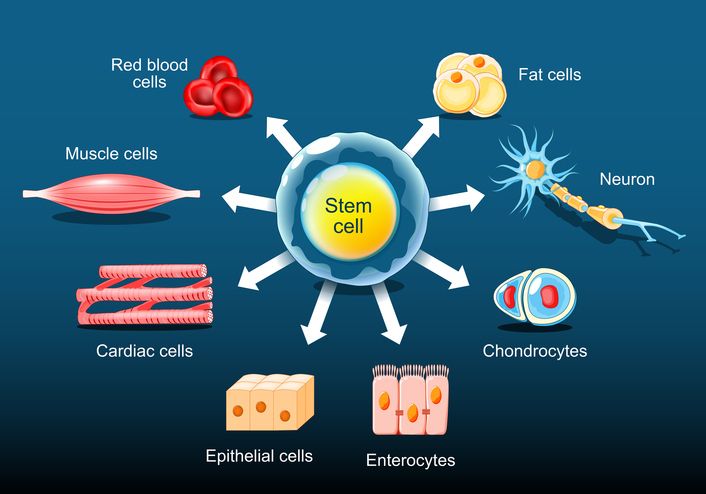Author: Natalie Ng|Updated: 28 May 2025
Acne is a common skin condition that affects many young adults. It shows up in different ways, such as blackheads and whiteheads on the skin’s surface, pus filled pimples, inflamed bumps, or deeper issues like nodular and cystic acne. Some breakouts stay mild, while others turn into more severe acne that leave scars or dark spots. Acne happens when dead skin cells, excess oil, and acne causing bacteria clog hair follicles. Hormonal changes, clogged pores, and excess oil production all make acne worse. Each type of acne needs the right treatment, from over the counter medications like benzoyl peroxide and salicylic acid to stronger acne medication and prescription medications for severe forms. Keep reading to learn the types of acne on the face and how to treat each one effectively, so you can manage breakouts, reduce inflammation, and prevent future acne blemishes.

Types of Acne on Face1: Blackheads
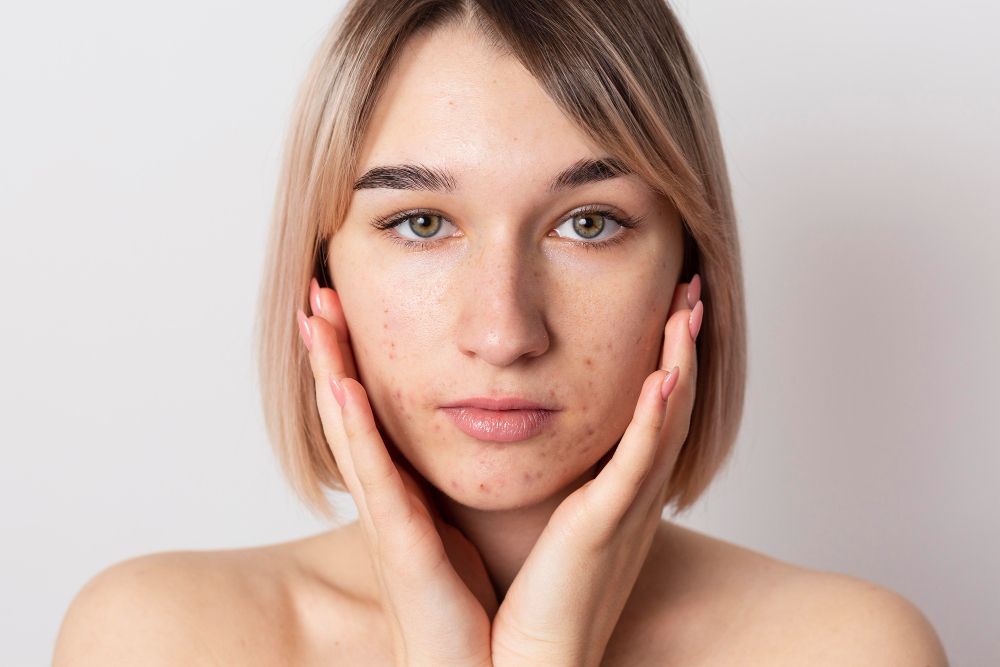
What causes blackheads
Blackheads form when hair follicles get clogged with dead skin cells, excess oil, and bacteria. The clogged pore stays open at the skin’s surface, so the material inside reacts with air and turns dark. This is what gives blackheads their distinctive black color.
Where blackheads often appear
Blackheads usually show up on the face, especially in the T-zone—forehead, nose, and chin. These areas have more sebaceous glands, which produce more oil. When dead skin and excess oil mix, they block hair follicles and lead to blackheads.
Best way to treat blackheads
Treating blackheads involves unclogging pores and reducing excess oil. Salicylic acid helps remove dead skin cells and prevent clogged hair follicles. Benzoyl peroxide targets acne causing bacteria and reduces inflammation. Clay masks absorb excess oil and help clear pores. Non-comedogenic products like moisturizers and sunscreen prevent clogged pores and acne lesions.
Avoid squeezing blackheads, as it can cause inflamed bumps, pus filled pimples, or acne scars. Regular cleansing, gentle exfoliation, and the right products help manage blackheads and prevent future breakouts.

Types of Acne on Face 2: Whiteheads
What causes whiteheads
Whiteheads form when dead skin cells, excess oil, and acne causing bacteria get trapped beneath the skin’s surface. A thin layer of skin seals the clogged pore, so air doesn’t reach the material inside. This keeps the blockage white or flesh-colored, unlike blackheads, which darken when exposed to oxygen.
Where whiteheads often appear
Whiteheads often show up on the face, especially around the nose, chin, and forehead. These areas have more sebaceous glands that produce excess oil, which increases the chance of developing acne blemishes like whiteheads.
Best solutions for whiteheads
Managing whiteheads starts with products that keep pores clear. Salicylic acid helps remove dead skin cells, while benzoyl peroxide targets acne causing bacteria and reduces inflammation. Retinoids can also prevent clogged pores by increasing cell turnover.
Avoid overwashing, as it can irritate the skin and trigger more oil production. Picking at whiteheads can push bacteria deeper, leading to inflamed bumps, acne scars, and even more severe acne. A gentle skincare routine, with the right ingredients, helps clear whiteheads and prevents future breakouts.
Book Now to Experience
Acne Treatment
1 Minute Self-Registration
Date should not be before minimal date

Types of Acne on Face 3: Papules
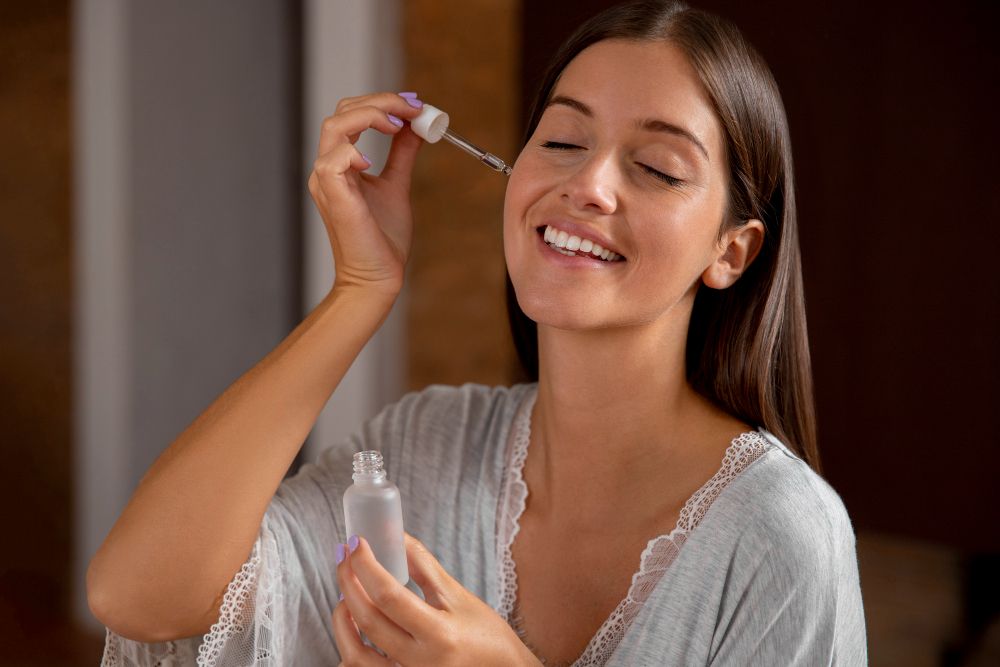
What causes papules
Papules form when pores get inflamed due to excess oil, bacteria, and dead skin cells. This leads to small, red or pink bumps that feel tender when touched. Hormonal changes, high stress, and oily skin increase the chances of developing papules. Unlike blackheads or whiteheads, papules do not have a visible center or pus.
Where papules often appear
Papules can show up anywhere on the face, chest, back, or shoulders. They often form in clusters, creating patches of red, inflamed bumps. The skin around papules can also look swollen and feel sore.
Best solutions for papules
Managing papules starts with products that reduce inflammation and clear clogged pores. Benzoyl peroxide helps kill acne causing bacteria, while salicylic acid exfoliates dead skin cells. Prescription retinoids can prevent clogged pores and support cell turnover.
A gentle cleanser, used twice a day, keeps skin clean without stripping moisture. Avoid touching or picking at papules, as this can spread bacteria and make acne worse. Dietary changes, like reducing dairy and high-glycemic foods, and managing stress may also help.
If papules don’t improve after a few weeks, a dermatologist may recommend prescription medications or oral antibiotics for more severe cases.

Types of Acne on Face 4: Pustules
What causes pustules
Pustules form when pores get blocked with oil, dead skin cells, and acne causing bacteria. The body sends white blood cells to fight the infection, which leads to a buildup of pus beneath the skin’s surface. This creates red bumps with white or yellow centers.
Where pustules often appear
Pustules usually develop on the face, chest, back, and shoulders. These areas have more sebaceous glands, so they produce more oil. Pustules can show up alone or in clusters, especially during acne flare-ups.
Best solutions for pustules
Managing pustules starts with keeping skin clean. Use a gentle, non-comedogenic cleanser twice a day, and avoid touching your face with unwashed hands. Products with benzoyl peroxide help reduce bacteria, while salicylic acid exfoliates and clears clogged pores.
It’s important to avoid popping pustules. Squeezing can push bacteria deeper into the skin, causing more severe acne, acne scars, or skin discoloration.
For stubborn or severe pustules, a dermatologist might prescribe stronger topical treatments or oral antibiotics to control inflammation and prevent future breakouts.

Types of Acne on Face 5: Nodular Acne
What causes nodular acne
Nodular acne forms when bacteria, oil, and dead skin cells get trapped deep within clogged hair follicles. The skin around the pore becomes inflamed, creating large, hard, and painful bumps that don’t come to a head like other acne lesions. Nodules are one of the most severe forms of acne, often lasting for weeks or even months.
Where nodular acne often appears
Nodular acne usually shows up on the face, chest, and back. These areas have more sebaceous glands, which produce excess oil that can clog pores. Nodules feel firm or tender when touched and can lead to long-term acne scars or dark spots if not treated properly.
Best solutions for nodular acne
Nodular acne often needs stronger treatments. Over the counter medications like benzoyl peroxide or salicylic acid may not be enough for deep, inflamed nodules. Prescription medications such as oral antibiotics, retinoids, or isotretinoin are often required to reduce inflammation and kill acne causing bacteria.
Avoid picking or squeezing nodules, as this can cause more severe acne and permanent acne scars. A dermatologist can recommend the best acne treatment based on the severity of the nodules and help prevent future breakouts.
Book Now to Experience
Acne Treatment
1 Minute Self-Registration
Date should not be before minimal date

Types of Acne on Face 6: Cystic Acne
What causes cystic acne
Cystic acne develops when a pore gets deeply clogged with dead skin cells, oil, and bacteria, leading to an infection deep within the skin’s layers. The body’s response creates large, inflamed, pus-filled lesions. These cysts can feel soft or firm, are painful to touch, and often leave acne scars if left untreated.
Where cystic acne often appears
Cystic acne tends to appear on the face, chest, back, and shoulders—areas where sebaceous glands produce more oil. These painful lesions can last for weeks or even months and often don’t form a visible head like other types of acne pimples.
Best solutions for cystic acne
Cystic acne needs medical treatment. Over the counter medications like benzoyl peroxide and salicylic acid aren’t strong enough for these deep, inflamed bumps. Prescription medications, such as oral antibiotics or isotretinoin, help reduce inflammation and control acne causing bacteria. Cortisone injections may also be used to reduce swelling and pain quickly.
A regular skincare routine helps prevent future breakouts, but avoid picking or squeezing cysts. This can cause acne scars, skin discoloration, and worsen the condition.

Types of Acne on Face 7: Hormonal Acne
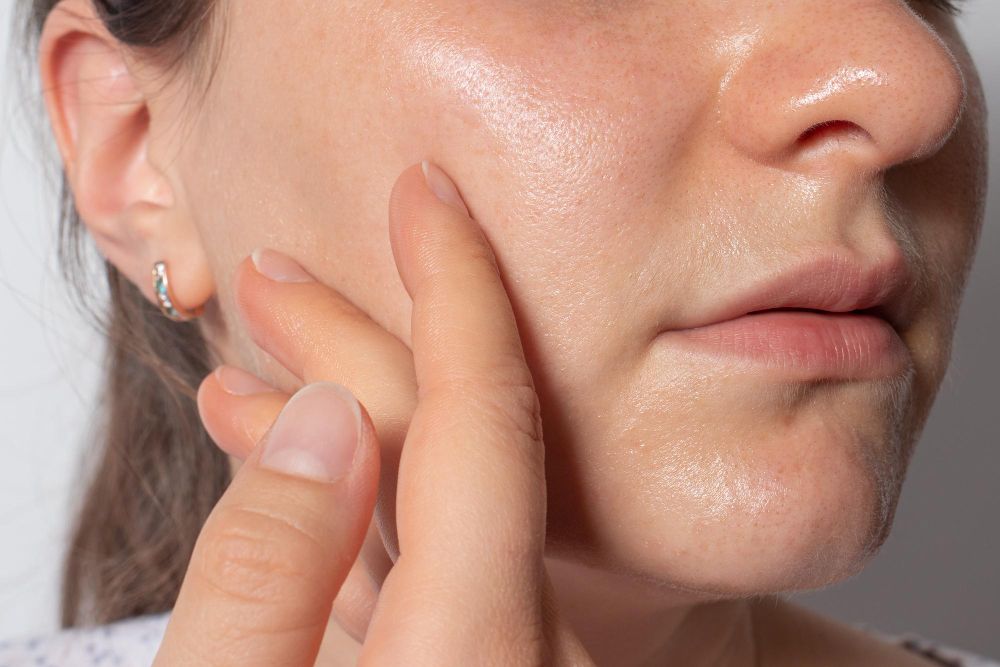
What causes hormonal acne
Hormonal acne forms when hormone levels, such as androgens, fluctuate. These changes make the sebaceous glands produce more oil, which leads to clogged pores and acne pimples. Hormonal shifts happen during puberty, menstruation, pregnancy, and menopause.
Where hormonal acne often appears
Hormonal acne usually shows up on the lower face, including the jawline, chin, and lower cheeks. It can also appear on the neck. These areas have more sebaceous glands that respond to hormonal changes, leading to tender bumps, cysts, and inflamed acne lesions.
Best solutions for hormonal acne
Managing hormonal acne often requires a mix of internal and external treatments. Prescription medications, like birth control pills or anti-androgen medications, help balance hormone levels. Topical treatments with benzoyl peroxide and salicylic acid can reduce acne causing bacteria and prevent clogged pores.
A balanced diet that avoids high-glycemic and dairy-heavy foods can also help reduce breakouts. Regular check-ins with a dermatologist can adjust treatments based on your skin’s response and help prevent future breakouts.

Types of Acne on Face 8. Fungal Acne
What causes fungal acne
Fungal acne, also called Malassezia folliculitis, is caused by an overgrowth of yeast on the skin—not the usual acne causing bacteria linked to acne vulgaris. This yeast, part of the skin’s normal microbiome, thrives in warm, oily environments, leading to inflamed, itchy bumps that look like acne pimples but are not the same.
Where fungal acne often appears
Fungal acne often shows up on the forehead, chest, back, and shoulders—areas with more oil production and sweat. The bumps are small, similar in size, and usually feel itchy, unlike typical acne lesions.
Best solutions for fungal acne
Fungal acne needs antifungal treatments to clear the yeast. Products containing ketoconazole, selenium sulfide, or zinc pyrithione help control yeast growth. It’s also important to avoid skincare products with heavy oils, as they can feed the yeast.
Wearing breathable fabrics, showering after sweating, and keeping skin clean and dry can help prevent fungal acne. If over-the-counter treatments don’t improve symptoms, a dermatologist can prescribe stronger antifungal medications for more severe cases.
Book Now to Experience
Acne Treatment
1 Minute Self-Registration
Date should not be before minimal date

Types of Acne on Face 9: Post-Inflammatory Hyperpigmentation
What causes post-inflammatory hyperpigmentation
Post-inflammatory hyperpigmentation (PIH) forms when the skin produces too much melanin in response to inflammation from acne. After a breakout heals, dark spots or patches often remain, especially in areas where the skin experienced inflamed bumps, pus filled pimples, or severe acne lesions.
Where post-inflammatory hyperpigmentation often appears
PIH usually appears in areas affected by acne on the face—especially on the forehead, cheeks, and chin. Dark spots left by acne vary in size and shape, depending on how severe the breakout was and whether the skin was picked or squeezed.
Best solutions for post-inflammatory hyperpigmentation
Treating PIH focuses on fading the dark spots and preventing new discoloration. Ingredients like vitamin C, kojic acid, and niacinamide help reduce melanin production and even out skin tone. Alpha-hydroxy acids (AHAs) and other exfoliants can increase skin cell turnover, helping fade discoloration faster.
Daily use of broad-spectrum sunscreen is essential, as sun exposure worsens hyperpigmentation and slows the skin’s healing process. Avoid picking or squeezing acne lesions, as this can increase inflammation and make dark spots more likely.
With the right routine, most post-acne marks fade over time. For stubborn or more severe cases, a dermatologist may recommend prescription treatments or in-office procedures such as chemical peels or laser therapy.

Common Triggers That Make Acne Worse
Why acne gets worse
Acne often starts with clogged pores and excess oil production, but certain factors can make acne worse and lead to more severe breakouts. Hormonal changes during puberty, menstruation, or pregnancy can cause the sebaceous glands to produce more oil, which increases the chances of developing acne. Stress can also trigger hormonal shifts that lead to an acne breakout.
Touching your face with unwashed hands, using oily skincare products, or wearing makeup that clogs pores can lead to more inflamed bumps and pus filled pimples. Diet also plays a role—high-glycemic foods and dairy products may contribute to developing acne by increasing oil production and inflammation in the skin.
Environmental factors like heat, humidity, or friction from tight clothing can make acne worse, while certain medications and genetics are also risk factors for more severe acne.
Reducing the risk of breakouts
Managing these triggers is important for preventing acne from getting worse. Keeping your skin clean, avoiding heavy products that clog pores, and following a balanced diet can help reduce oil production and inflammation. Be mindful of skincare choices, and choose non-comedogenic products that won’t block pores.
If acne doesn’t improve or starts to worsen, working with a dermatologist can help you find the right acne treatment, whether it’s over the counter medications like salicylic acid and benzoyl peroxide or prescription treatments for more severe cases like nodular acne or cystic acne.

How to Prevent Acne Scars
Why acne scars form
Acne scars form when inflamed acne lesions, like papules, pustules, or cystic acne, damage the deeper layers of the skin. Picking at pimples, squeezing pus filled bumps, or trying to pop tender bumps increases inflammation, which makes the skin more likely to scar. Risk factors like severe acne, delayed treatment, or frequent breakouts can also make acne scars more likely to develop.
Tips to prevent acne scars
The best way to prevent acne scars is to manage acne properly from the start. Treat acne early with products like benzoyl peroxide or salicylic acid to reduce inflammation and kill acne causing bacteria. For moderate or severe acne, a dermatologist may recommend prescription medications or oral antibiotics to prevent long-term damage.
Avoid popping pimples or picking at the skin, as this can lead to deep scarring and skin discoloration. Keep the skin clean using a gentle cleanser, and protect it with non-comedogenic products. Sunscreen is also essential, as sun exposure can darken post-acne marks and make scars look worse.
For stubborn breakouts or acne scars that don’t fade, treatments like topical retinoids, chemical peels, or laser therapy can help improve skin texture and reduce the appearance of scars over time.
Book Now to Experience
Acne Treatment
1 Minute Self-Registration
Date should not be before minimal date

Enhance Your Acne Treatment Results with Advanced Acne Care
Cleansing, exfoliation, and targeted skincare with ingredients like salicylic acid and benzoyl peroxide play a big part in treating acne. But even with a solid routine, stubborn acne—like blackheads, whiteheads, hormonal acne, and cystic acne—can persist, leading to inflamed bumps, pus filled pimples, and acne scars. This is where Acne Treatment gives your skin the extra help it needs to clear breakouts and prevent future acne blemishes.
This professional, non-invasive treatment uses a two-way spiral suction system and drainage technology to deeply cleanse clogged hair follicles, removing dead skin cells, excess oil, and acne causing bacteria. Once the skin is free of impurities, a medical-grade hydrating serum is infused to restore moisture, calm inflamed skin, and support collagen production for smoother, clearer skin. Whether you struggle with mild acne, moderate acne, or more severe forms like nodular acne, this treatment can support your skincare goals and improve skin texture.
How Acne Treatment Helps Reduce Acne
Acne Treatment targets the root causes of acne breakouts using a two-step approach:
Spiral suction and drainage: Clears clogged pores by removing dirt, sebum, and dead skin, reducing the risk of future acne pimples, inflamed bumps, and pus filled lesions.
Hydrating serum infusion: Soothes irritated skin, restores water balance, and promotes collagen production to help fade acne scars and smooth textured skin.
Together, these steps help calm active breakouts, reduce oil production, and prevent clogged pores that can lead to more severe acne.
Why Combine Acne Treatment with Your Skincare Routine
Adding Acne Treatment to your acne care routine offers several benefits:
• Deeply cleanses pores to remove acne causing bacteria, excess oil, and dead skin cells
• Supports skin hydration and reduces irritation
• Improves skin texture, smooths inflamed bumps, and helps prevent acne scars
• Suitable for treating all types of acne on the face, from blackheads and whiteheads to nodular acne and cystic acne
• Non-invasive, painless, and safe for sensitive skin
• Helps maintain clearer, healthier skin over time
Acne Treatment is designed to work alongside your daily routine of cleansing, treating, and moisturizing acne-prone skin. Together, they help reduce acne lesions, fade dark spots, and restore skin’s natural balance.
Support your acne skincare journey with professional Acne Treatment. Book the Acne Treatment today and take the next step towards clearer, smoother skin.
Common Acne Myths and the Truth Behind Them

Acne is caused by poor hygiene
Many people think acne forms because the skin is dirty, but that’s not true. Acne occurs when excess oil, dead skin cells, and acne causing bacteria clog hair follicles. Washing the face too often or using harsh cleansers can strip the skin’s surface, trigger excess oil production, and make acne worse. A gentle cleansing routine, twice a day, is enough.
Popping pimples helps acne heal faster
Popping pimples might seem like a quick fix, but it can push bacteria deeper into the skin, cause inflamed bumps, and lead to acne scars or skin discoloration. Picking at acne blemishes also increases the risk of developing more severe acne, including nodules and cysts.
Only teenagers get acne
Acne is common in young adults, but hormonal changes, stress, and other risk factors can cause acne at any age. Adult acne, especially hormonal acne, is common in women during menstruation, pregnancy, or menopause.
Diet has no effect on acne
Certain foods can worsen acne. High-glycemic foods and dairy products may increase excess oil production, leading to more breakouts. While diet alone doesn’t cause acne, eating a balanced diet can support healthy skin and help reduce acne blemishes.
Acne will go away on its own
While some mild acne may clear without treatment, moderate to severe acne often needs specific acne treatments. Without proper care, acne can worsen, leading to deep, painful pimples, inflamed bumps, and long-lasting acne scars. Early treatment with over the counter medications or prescription medications helps prevent future breakouts and reduce skin damage.
Book Now to Experience
Acne Treatment
1 Minute Self-Registration
Date should not be before minimal date
FAQ
Can stress worsen acne and cause more breakouts?
Yes, stress can worsen acne by triggering hormonal changes that increase oil production in the skin. When stress levels rise, the body produces more cortisol, a hormone that can lead to excess oil and clogged pores. This makes it easier for acne causing bacteria to grow, which can result in more inflamed bumps, acne pimples, and even cystic acne. Managing stress can help prevent future acne breakouts and reduce the risk of developing acne lesions and acne scars.
How long does it take to see results from acne treatments like benzoyl peroxide and salicylic acid?
Most over the counter medications, such as benzoyl peroxide and salicylic acid, take about six to eight weeks of consistent use to show noticeable improvement. These treatments help reduce acne causing bacteria, unclog pores, and clear dead skin cells that lead to acne. For more severe acne, such as nodular acne or cystic acne, prescription medications or professional acne treatments may be needed for faster results.
Can diet affect the risk of developing acne?
Yes, certain dietary choices can increase the risk of developing acne. Foods high in sugar and refined carbohydrates, known as high-glycemic foods, may trigger hormonal changes and excess oil production, leading to clogged pores and acne blemishes. Dairy products can also affect some people by contributing to hormonal acne. While diet alone does not cause acne, it can worsen acne and make it harder to manage. A balanced diet with plenty of fruits, vegetables, and water supports overall skin health.
Why does acne leave behind dark spots and skin discoloration?
Acne can leave behind dark spots and skin discoloration, known as post-inflammatory hyperpigmentation (PIH), when the skin produces excess melanin in response to inflammation. This often happens after pus filled pimples, inflamed bumps, or severe acne lesions heal. Picking or squeezing pimples can make PIH worse. Wearing sunscreen daily and using ingredients like vitamin C, niacinamide, or retinoids can help fade these dark spots over time.
Can clogged hair follicles cause both acne and fungal acne?
Yes, clogged hair follicles are involved in both acne and fungal acne, but the causes are different. Acne forms when dead skin cells, excess oil, and acne causing bacteria clog hair follicles, leading to inflamed bumps, blackheads, whiteheads, and sometimes cystic acne. Fungal acne, or Malassezia folliculitis, happens when yeast overgrowth blocks follicles, causing small, itchy bumps. Both conditions involve clogged pores, but fungal acne needs antifungal treatments instead of typical acne medications like benzoyl peroxide or salicylic acid.
Recommended Articles
COPYRIGHT© NEW BEAUTY MANAGEMENT LIMITED 2025. ALL RIGHT RESERVED.

